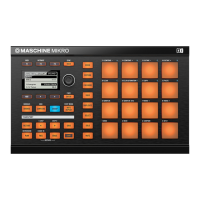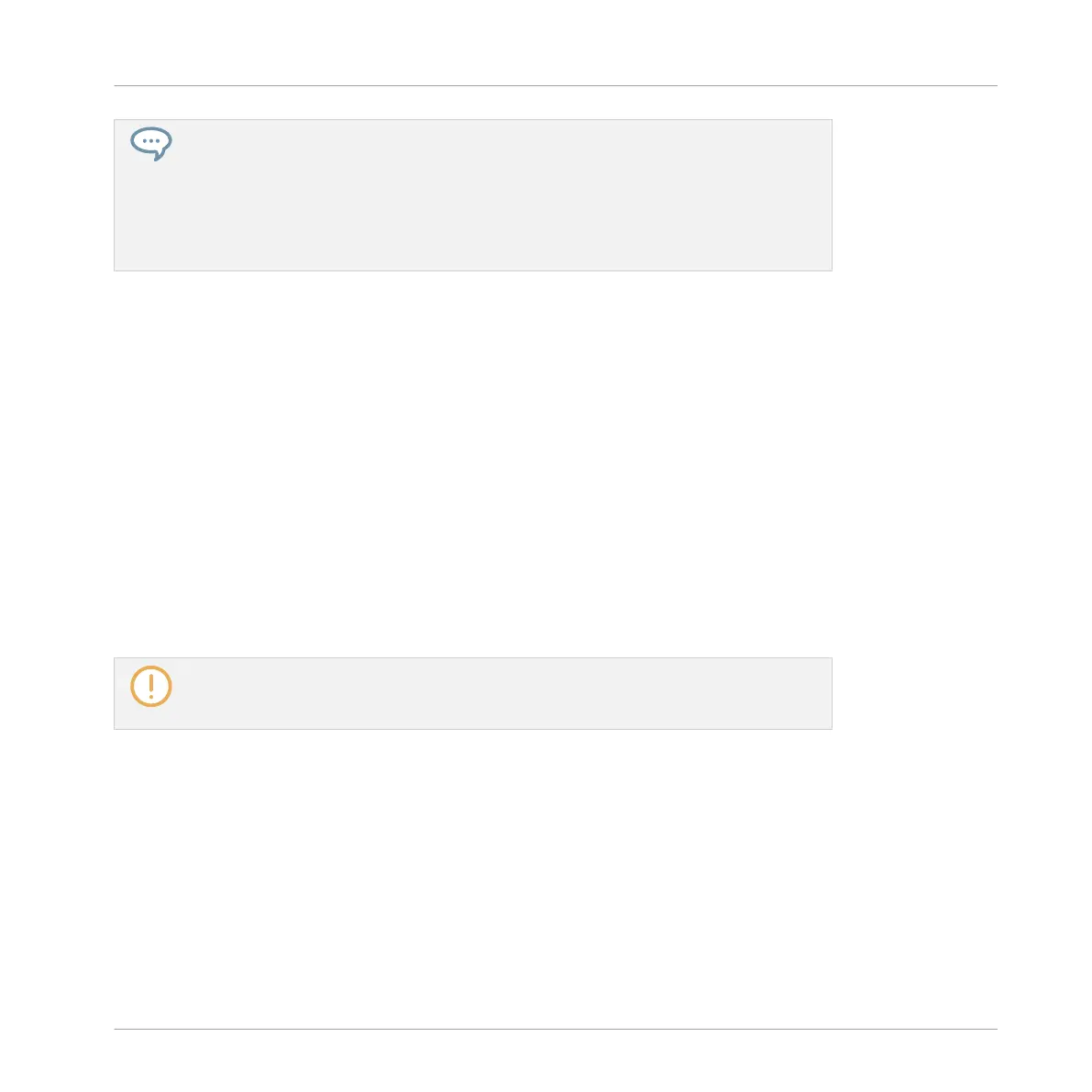Example: Let’s assume that you have recorded some modulation for the Cutoff parame-
ter of a Filter Plug-in in order to create a filter sweep. Since modulation is defined rela-
tive to the non-modulated value, by manually adjusting the Cutoff parameter you can
shift the entire sweep across frequencies. By assigning this Cutoff parameter to a MIDI
control or an automation ID (see section ↑8.2.3, Controlling Parameters via MIDI and
Host Automation to know how to do this) you can create a filter sweep that automatically
moves across frequencies!
7.5.1 Which Parameters Are Modulatable?
All the modulatable parameters are found in Plug-ins or Channel properties (e.g., you cannot
modulate the Pattern Length or the Step Grid resolution). This means that all modulatable pa-
rameters are found in a Parameter page of the Control area (when the software is in Arrange
view).
In order to be modulatable, parameters of Plug-ins and Channel properties have to meet fol-
lowing requirements:
▪ The parameter must be controlled by a knob or a button in the software. Most parameters
controlled by selectors (e.g., for selecting an operating mode or a filter type) cannot be
modulated — however there are a few exceptions.
▪ The parameter must be at the Group or Sound level. Parameters at the Master level cannot
be modulated.
This second rule is also true for Plug-ins: if a Plug-in is loaded at the Master level, its
parameters will not be modulatable — but the same Plug-in loaded at the Group or
Sound level will have its parameters modulatable.
Almost all parameters meeting these requirements can be modulated, the only exceptions be-
ing:
▪ Plug-ins:
◦ Saturator: in Tube mode, the Bass Overload button (MAIN section) and Bypass button
(EQ section).
◦ Percussion (Drumsynth): in Fractal mode, the Tune Hold button in the Main page.
▪ Channel properties:
Working with Patterns
Recording and Editing Modulation
MASCHINE MIKRO - Manual - 366

